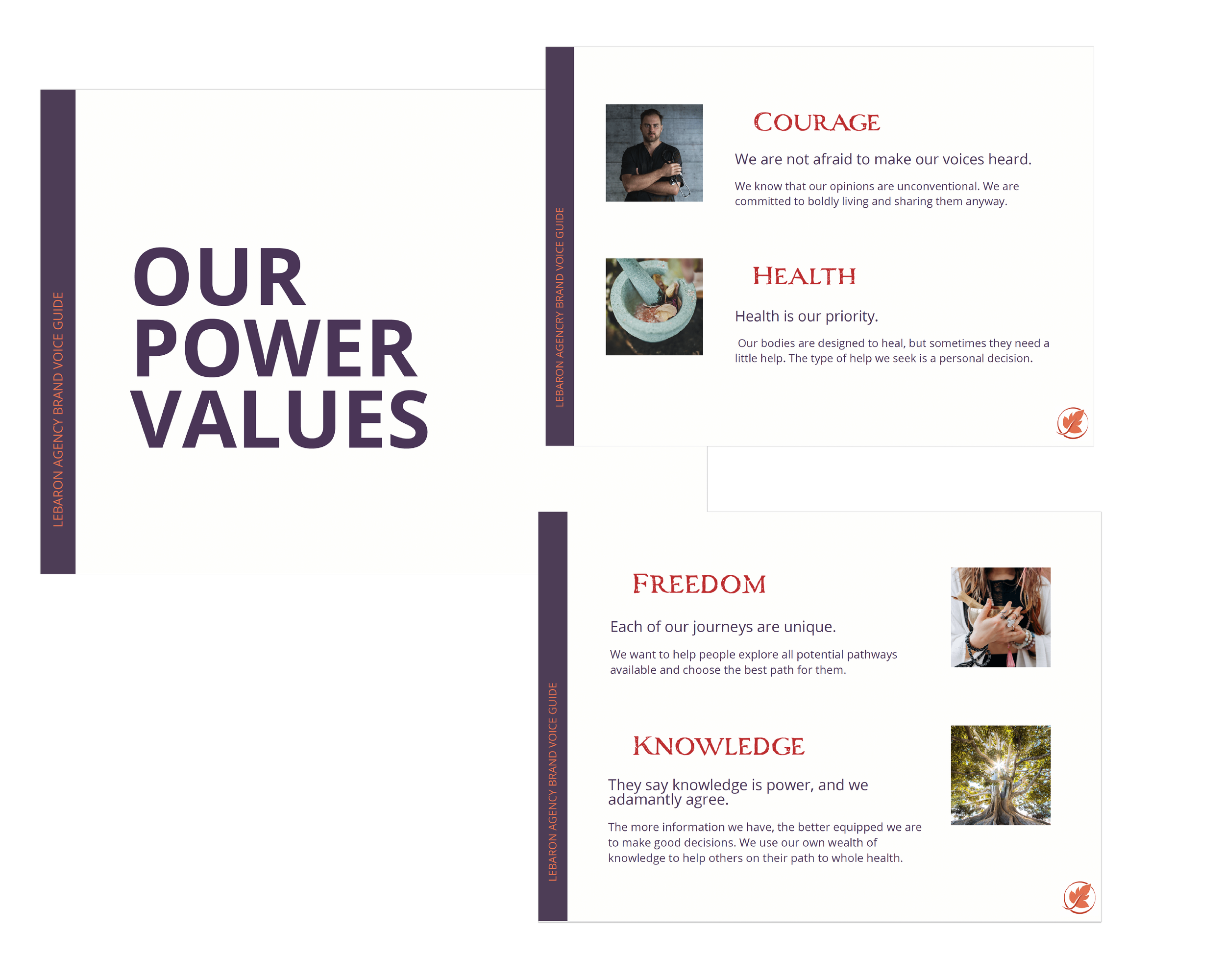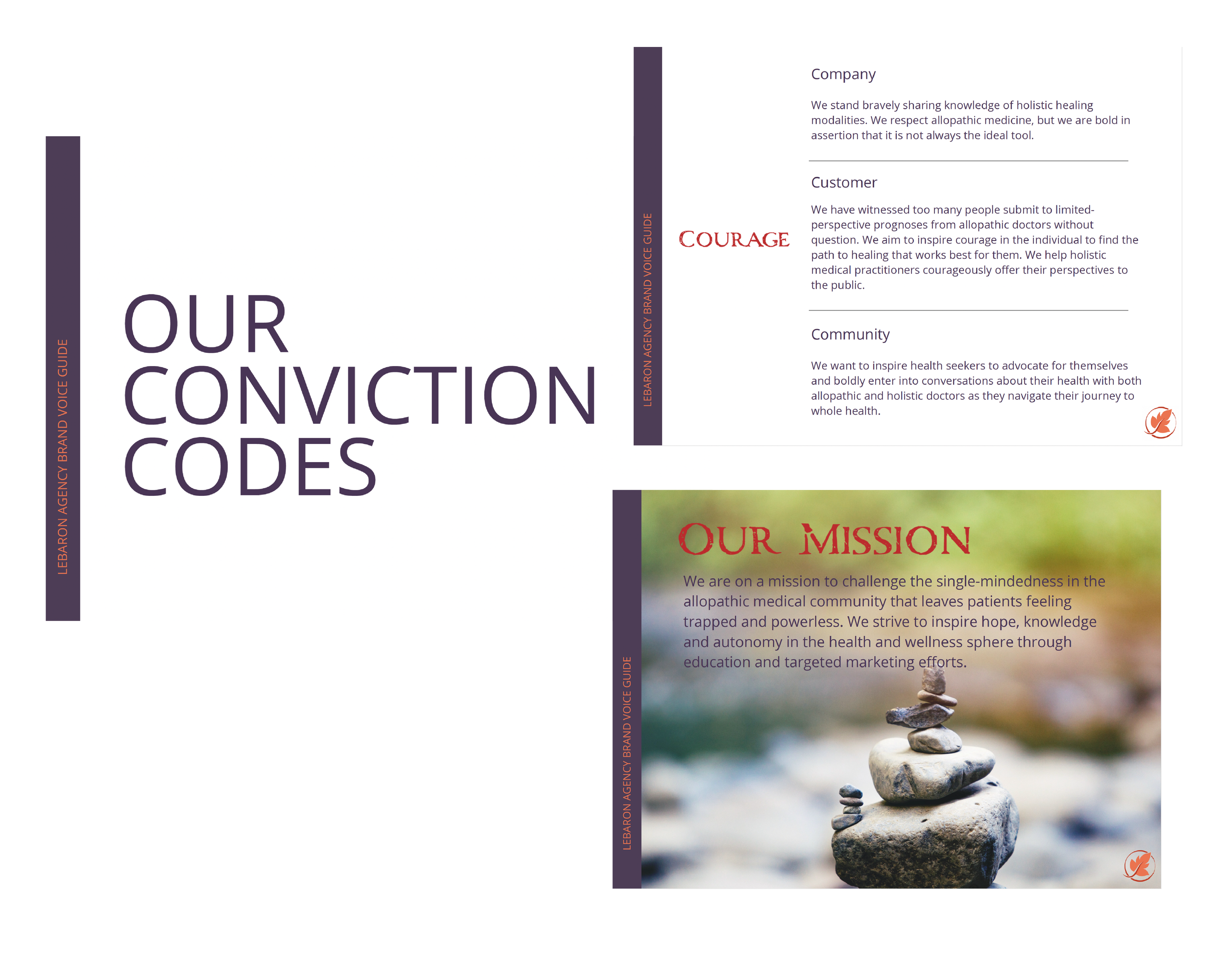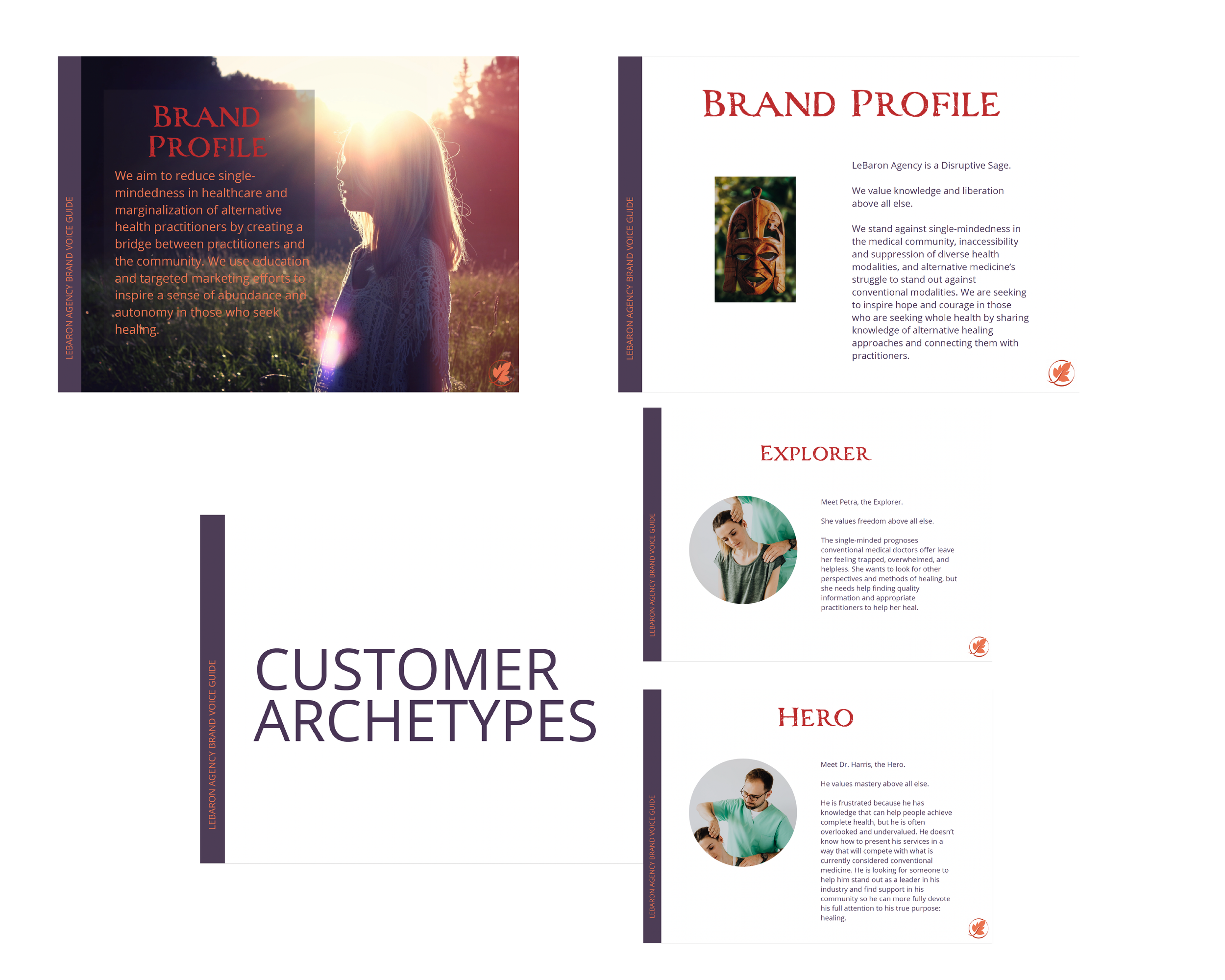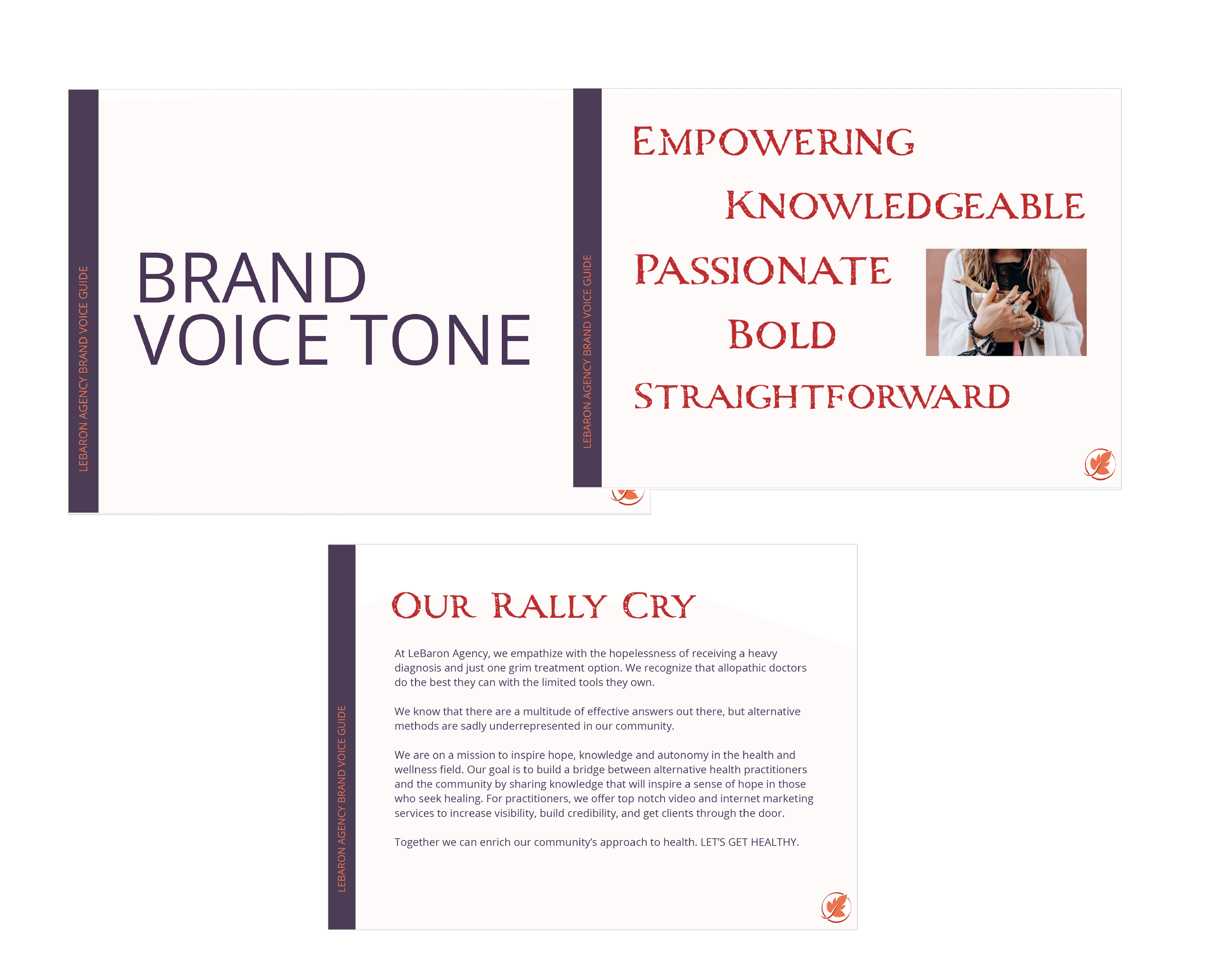Brand Voice and Identity Design Work
LeBaron
I took a live virtual workshop from the Copy Posse on establishing brand voice. Within the workshop, we each created a strategic brand voice guide for either a real or imaginary company.
I wrote mine for the company I dreamed of starting one day, and my final voice guide was featured at the end of the class. (You can see that in it’s entirety here)
One of the other students in the class was really struggling through the process as she was also running her own company, LeBaron Agency. She asked if I would help her develop her own voice, and then also develop a logo for a docuseries LeBaron was going to make.
I was very excited to work with this brand because it’s a brand that promotes and works with holistic practitioners, and holistic medicine is a passion dear to my own heart. It was a joy to interact with this client as a result.
For the brand voice guide, we started with nailing down the values for the brand and then fleshing that out into conviction codes. This helps establish a solid narrative for all brand communications, internal and client facing. Having a strong foundation allows all of the following steps to fall into place more easily.
Brand Archetypes
Next, we examined the targeted brand-customer relationship.
We determined LeBaron’s brand archetype. Archetypes are a useful tool for discussing the role we want to serve for our client and reminding us of the generalized problems we aim to solve for them.
LeBaron had a couple of target clients because it contained multiple branches- one servicing holistic health practitioners and one servicing potential patients. So we established the most fitting archetype for each audience.
Story and Personality
According to the Copy Posse’s process, the next step is to write the brand narrative. Meaning the story of how and why the business was started—often this will be the founder’s story. I won’t share this with you here because it doesn’t quite feel my place to do so.
And the final step is to establish the brand tone, create a brief directory of vocabulary the brand will commonly use (they can be fun ways to say normal things or just common terms the brand will use) and start writing essential business statements.
When I work on brand voice, I like to get a bit more in depth with the tone of voice. Simply because I’m a language geek. However, in the Copy Posse process, the process is just to pick 3-5 adjectives to describe your tone based off the foundational work from the start. And this serves its purpose.
The brand rally cry is unique component to the Copy Posse process. It envelops the mission statement, positioning, and promise in a way that feels very empowering.
Feeling Seen
By the end of the process, my client had a book in her possession that strategically defined the brand’s purpose, mission, tone of voice, and phraseology. Plus had a few key business statemtns written, including the mission and vision statements, the rally cry, and the brand origination story.
Of course, I also designed the document using her established brand colors and logo.
We corresponded virtually throughout the process, so I can’t confirm this, but she told me that she cried as she reviewed the manual. It felt so authentic to her and her wishes for her brand. And that is the most I could possibly hope for.
A New Logo Design
She also wanted me to help her develop a logo and identity branding for a docuseries her company was putting into production, and I was happy to help.
Throughout my time with this client, she preferred to receive PDF presentations over video or live, so she could review and respond at her convenience. Below I will share a bit of my logo proposal so you can see a bit of the process:
Sadly, she ended up putting the docuseries was put on what seems to be an indefinite hold. We never finalized the options for the logo, and while we did move into some moodboarding, the project ended there.






